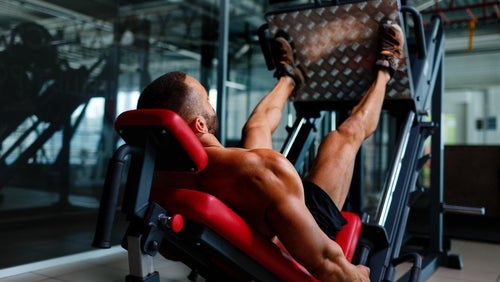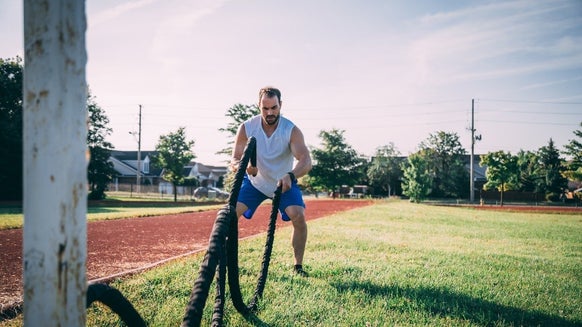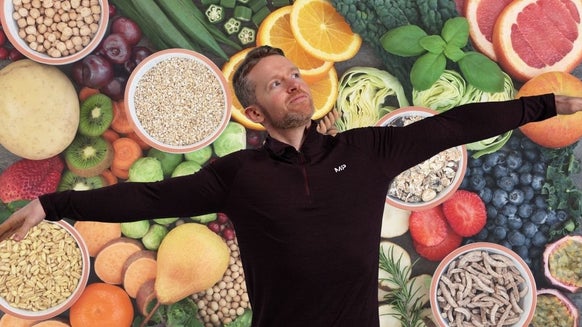The Awkward Truth Of Six Pack Abs & Low Body Fat Goals

The six pack is often heralded as the epitome of fitness and the “perfect” physique, but is it really all that? And then there’s the even bigger question — is it really possible for everyone to achieve?
The good news is that it’s achievable. The bad news, it isn’t necessarily healthy, and just like all things diet and fitness related, there really is no quick fix.
To lower body fat safely and effectively, it’s important to focus on both diet and exercise. There’s no one-size-fits-all method and a balanced approach needs to be taken. Genetics, body shape, and build always factor into individual results.

So, what can you do?
You can do as many crunches as there are people in the world, but until you're in a calorie deficit and lose the layer of fat over your abdominal muscles, the six-pack abs won’t show. This makes a calorie deficit extremely important as reducing body fat is a necessary step to reveal a chiselled midsection.
Often when you're in a calorie deficit and lose weight, you also lose muscle. To help maintain muscle mass, it’s important to consume adequate amounts of protein, the building blocks of muscle. Aim for a higher-than-average amount (average is around 0.8g/kg of bodyweight), typically 1.2-1.5g/kg. This allows for preservation of lean muscle mass.1
Carbs also cause the body to store extra water. When we eat carbs, the energy that we don’t use right away is stored as glycogen molecules. Each gram of glycogen comes with 3g of water attached. When we decrease carbohydrates, it tends to create an illusion of easy weight loss but actually it’s water that’s being decreased, giving us the visual appeal of a more defined midline.2
Lastly, combining cardio — specifically high intensity exercise and resistance training — whilst in a calorie deficit seems to be an effective way to tone the abdominal region of your body.3 Simple exercises like walking or swimming laps can also be effective in increasing total energy expenditure.4
The theory of spot reduction has been promoted in the health and fitness world for some time — this is where you can reduce fat levels on certain body areas by exercising them specifically, however, there’s not much evidence to support it. For instance, as we said before, smashing out the crunches alone isn’t going to give you abs.
Is it healthy to have very low body fat?
Simply put, no. Too little body fat can be harmful and some body fat is good — we actually need it to survive.
This fat can be used to ensure you have sufficient energy reserves to survive and also heat your body. Furthermore, it protects internal organs and joints from injury. We definitely need fat on our body.
Once your body goes ‘out of its comfort zone’ and starts to get to the lower body fat percentages, it tries everything to fight back. It doesn’t like being there and will do everything to defend your most stable weight. This is because your body thinks you are putting it into a starved state and prepares it for the next ‘famine’. This is known as the set point theory.5
Women naturally require more fat than men. This is due to the hormone oestrogen, which is necessary to support fertility
Basic functions of life will start to deteriorate such as concentration, breathing, temperature regulation, menstrual cycle, and energy levels will start to go haywire if essential fats start to fall below 5% for men and 15% in women. Women have high essential body fat ranges as a result of childbearing and reproductive needs.7,8
So, as you can read, having a six pack definitely doesn’t necessarily mean that you’re taking proper care of your body.

Do genetics play a role?
Genetics play an interesting role in body composition, especially when it comes to body fat.
Research suggests that abdominal fat, for example, is inherited. This is due to DNA variants that affect the maintenance and distribution of body fat, as well as body shape.9
It’s said that those who carry the FTO gene, may weigh on average 3kg more and are 1.7 times more likely to be obese than those that don’t carry that gene.10 Although there is promising research into the influence that genetics have on our body composition, genetics aren’t keeping you from losing weight.
It’s clear that diet has the biggest impact on weight and body composition. Focus on understanding the role that nutrition and exercise play in your fitness goals as opposed to wondering if your weight loss struggles are because of hereditary factors.
Take home message
Revealing your hidden six pack requires a lot of dedication and commitment and certainly doesn’t occur overnight. Your body fat percentage, genetics, diet, and fitness all play a role in whether or not that six pack will appear.
Instead, focus your efforts on a well-balanced diet and moving your body daily. We’ve seen that body fat stores that are too low, are not considered healthy and aren’t worth the extreme restriction in our opinion.
READ THIS NEXT:

5 Ways To Reduce Body Fat While Building Muscle
How you can build that lean muscle.

Best Supplements For Muscle Gain & Fat Loss | Beginner’s Supplement Guide
The basics of building muscle and losing fat.

Evangeline has taken part in competitive sports since a young age. As a qualified RYA Dinghy Instructor, she understands the importance of proper nutrition for fuelling extreme and endurance sports, especially due to her experience in Team GBR Squads and captaining and coaching her University first team.
In her spare time, Evangeline loves running – especially marathons. On the weekends, you’ll find her taking on water sports or hiking up a hill. Her favourite evenings are spent taking on a HIIT session or squats in the gym before digging into some spicy food and a ton of vegetables – yum!
Find out more about Evie's experience here.






